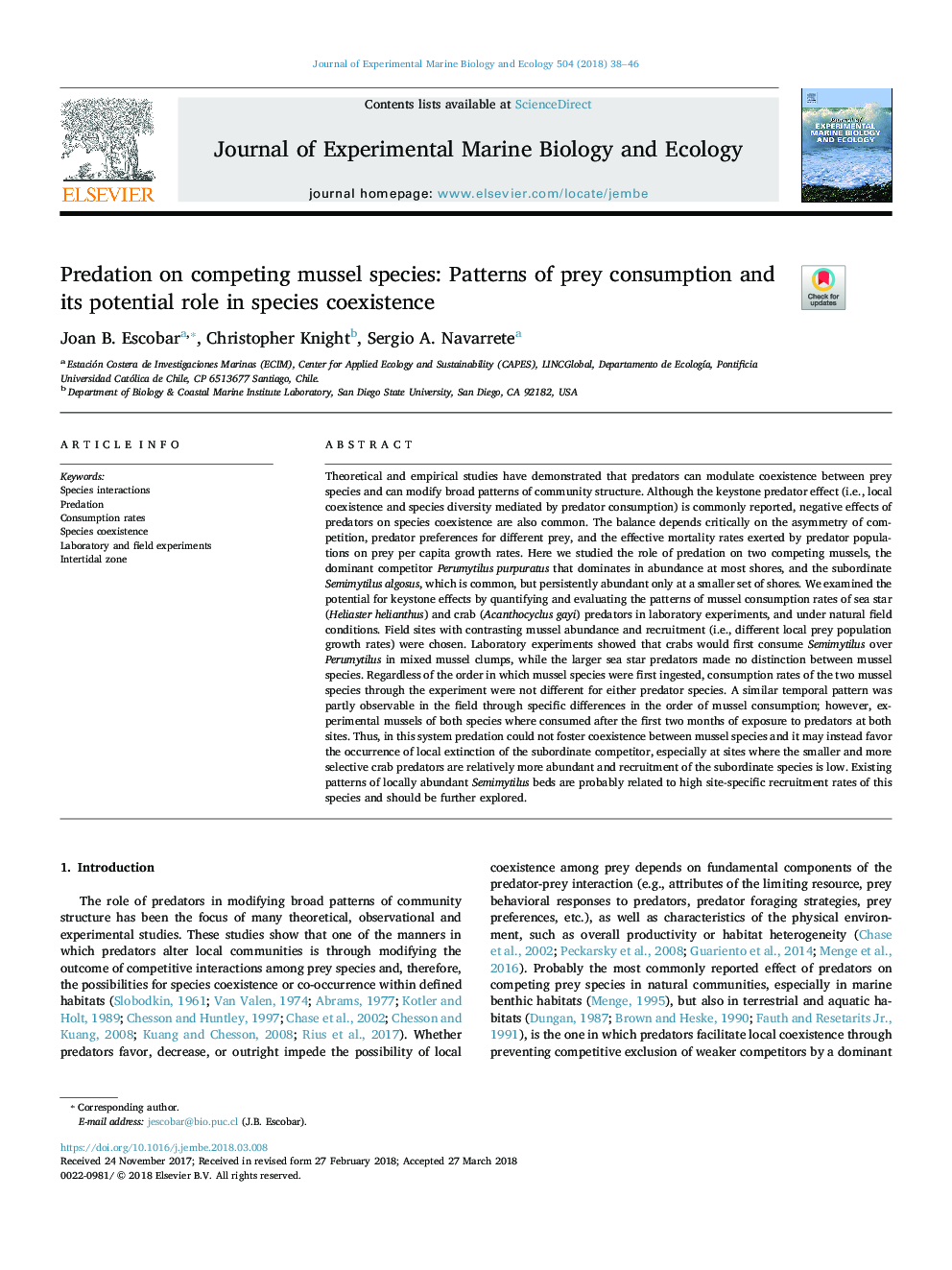| کد مقاله | کد نشریه | سال انتشار | مقاله انگلیسی | نسخه تمام متن |
|---|---|---|---|---|
| 8848912 | 1618371 | 2018 | 9 صفحه PDF | دانلود رایگان |
عنوان انگلیسی مقاله ISI
Predation on competing mussel species: Patterns of prey consumption and its potential role in species coexistence
ترجمه فارسی عنوان
پیشگامی در رقابت گونه های مسی: الگوهای مصرف شکار و نقش بالقوه آن در همزیستی گونه ها
دانلود مقاله + سفارش ترجمه
دانلود مقاله ISI انگلیسی
رایگان برای ایرانیان
کلمات کلیدی
موضوعات مرتبط
علوم زیستی و بیوفناوری
علوم کشاورزی و بیولوژیک
علوم آبزیان
چکیده انگلیسی
Theoretical and empirical studies have demonstrated that predators can modulate coexistence between prey species and can modify broad patterns of community structure. Although the keystone predator effect (i.e., local coexistence and species diversity mediated by predator consumption) is commonly reported, negative effects of predators on species coexistence are also common. The balance depends critically on the asymmetry of competition, predator preferences for different prey, and the effective mortality rates exerted by predator populations on prey per capita growth rates. Here we studied the role of predation on two competing mussels, the dominant competitor Perumytilus purpuratus that dominates in abundance at most shores, and the subordinate Semimytilus algosus, which is common, but persistently abundant only at a smaller set of shores. We examined the potential for keystone effects by quantifying and evaluating the patterns of mussel consumption rates of sea star (Heliaster helianthus) and crab (Acanthocyclus gayi) predators in laboratory experiments, and under natural field conditions. Field sites with contrasting mussel abundance and recruitment (i.e., different local prey population growth rates) were chosen. Laboratory experiments showed that crabs would first consume Semimytilus over Perumytilus in mixed mussel clumps, while the larger sea star predators made no distinction between mussel species. Regardless of the order in which mussel species were first ingested, consumption rates of the two mussel species through the experiment were not different for either predator species. A similar temporal pattern was partly observable in the field through specific differences in the order of mussel consumption; however, experimental mussels of both species where consumed after the first two months of exposure to predators at both sites. Thus, in this system predation could not foster coexistence between mussel species and it may instead favor the occurrence of local extinction of the subordinate competitor, especially at sites where the smaller and more selective crab predators are relatively more abundant and recruitment of the subordinate species is low. Existing patterns of locally abundant Semimytilus beds are probably related to high site-specific recruitment rates of this species and should be further explored.
ناشر
Database: Elsevier - ScienceDirect (ساینس دایرکت)
Journal: Journal of Experimental Marine Biology and Ecology - Volume 504, July 2018, Pages 38-46
Journal: Journal of Experimental Marine Biology and Ecology - Volume 504, July 2018, Pages 38-46
نویسندگان
Joan B. Escobar, Christopher Knight, Sergio A. Navarrete,
